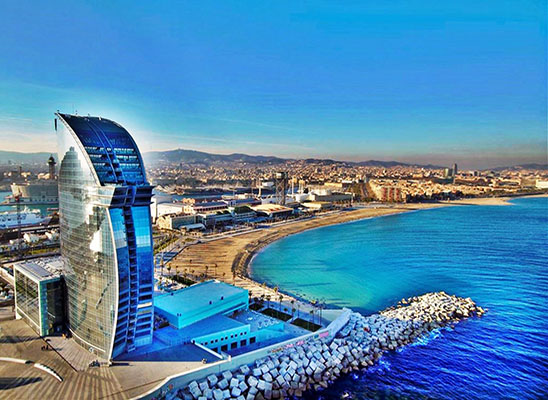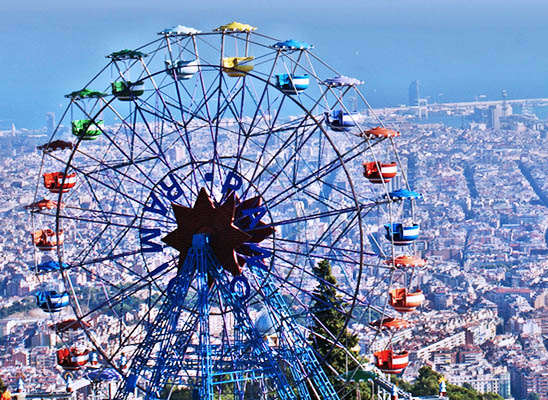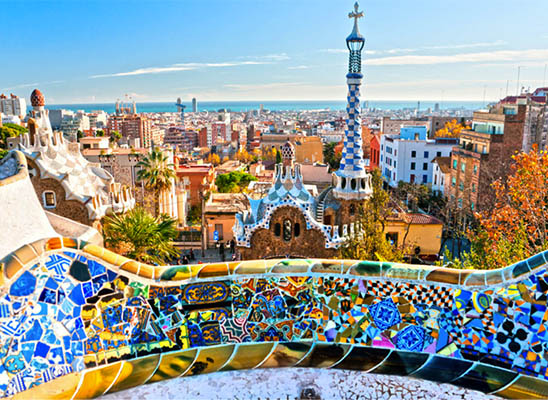Casa Mila la Pedrera
Here are five amazing things to do around Casa Mila la Pedrera
1.) Visit this Antoni Gaudi Masterpiece
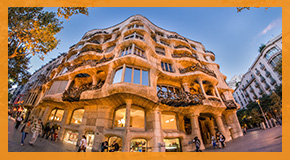 After the Sagrada Familia, Casa Milà or “la Pedrera” as it is often called, it,s Gaudí’s second most popular building in Barcelona.
After the Sagrada Familia, Casa Milà or “la Pedrera” as it is often called, it,s Gaudí’s second most popular building in Barcelona.
As the Pedrera covers an area of more than 100m² and embraces two large circular patios on each of its sides, every part of this Casa gets its share of sunlight.
As well as being constructed with natural stones, it lacks colors and ornamentation design, a choice made by Gaudi on purpose. You can notice that the “waving” style of Gaudí is still recognizable, though. The most interesting place of the house may be the rooftop: there you can find a large ensemble of surrealistic chimneys, which look completely different from one another, and several sculptures which dominate the rooftop.
If you want to acquire precise knowledge about Gaudí and his architecture, don’t miss a free Gaudí walking tour in Barcelona through the Eixample neighborhood with a native. They’ll show you those masterpieces of Gaudi in the area and also some other modernists prints in Eixample.
2.) Relax at the Jardins Del Palau Robert
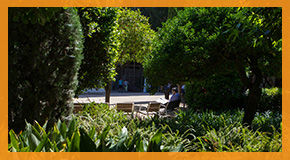 Another famous park in Barcelona: it is an ideal spot to rest after a visit or a tour, but it is more than an urban park. It is one of the main botanic gardens in Barcelona: a festival of scents and colors awaits you, as well as regular art exhibitions. Sometimes they also offer concerts in the terrace.
Another famous park in Barcelona: it is an ideal spot to rest after a visit or a tour, but it is more than an urban park. It is one of the main botanic gardens in Barcelona: a festival of scents and colors awaits you, as well as regular art exhibitions. Sometimes they also offer concerts in the terrace.
3.) A stroll on El Passeig De Gracia
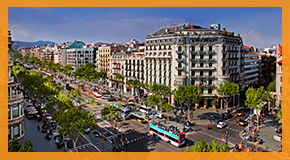 El passeig de gràcia brings together “el modernisme” (the catalan branch of Art Nouveau architecture) and the extravaganza of luxury stores, and that’s where its charms come from. The avenue starts near the Casa Milà and the Avigunda diagonal and ends at Plaça de Catalunya, where Las Ramblas begin. It is thus one of the main thoroughfares of Barcelona. During your stroll you will discover architectural jewels like the Casa Batlló, next to prestigious brands of clothing, perfume, or very famous hotels.
El passeig de gràcia brings together “el modernisme” (the catalan branch of Art Nouveau architecture) and the extravaganza of luxury stores, and that’s where its charms come from. The avenue starts near the Casa Milà and the Avigunda diagonal and ends at Plaça de Catalunya, where Las Ramblas begin. It is thus one of the main thoroughfares of Barcelona. During your stroll you will discover architectural jewels like the Casa Batlló, next to prestigious brands of clothing, perfume, or very famous hotels.
4.) Stop at the Casa Batlló
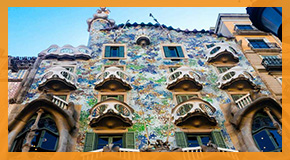 The local name for the Casa Batlló is “Casa dels ossos” (House of Bones), since it has a skeletal organic quality. It was originally designed for a middle-class family, located in a rather prosperous district of Barcelona.
The local name for the Casa Batlló is “Casa dels ossos” (House of Bones), since it has a skeletal organic quality. It was originally designed for a middle-class family, located in a rather prosperous district of Barcelona.
Casa Batlló looks very impressive – like everything Gaudí designed. The ground floor, in particular, is rather striking with its tracery, irregular oval windows or gracefully sculpted stonework.
Gaudí seems to have wanted to avoid any straight lines. Moreover, much of the façade is adorned with a mosaic made of broken ceramic tiles (this technique is called trencadís): it starts in shades of golden orange and slowly evolves into greenish shades of blue.
5.) Reach Placa De Catalunya
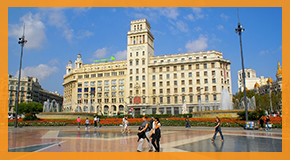 La Plaça de Catalunya (Catalonia Square in English) is a very large square in central Barcelona, generally considered to be both the centre of Barcelona and the place where the old city (Barri Gòtic and Raval, in Ciutat Vella) and the most recent 19th century-built Eixample meet.
La Plaça de Catalunya (Catalonia Square in English) is a very large square in central Barcelona, generally considered to be both the centre of Barcelona and the place where the old city (Barri Gòtic and Raval, in Ciutat Vella) and the most recent 19th century-built Eixample meet.
The city’s main streets and avenues meet at Plaça de Catalunya: Rambla de Catalunya, Passeig de Gràcia, La Rambla, Portal de l’Àngel… This square occupies an area of about 50,000 m². It is known above all for its statues and fountains, as well as for its closeness to many of Barcelona’s most popular landmarks and monuments, and for the flock of pigeons that usually gathers in its centre.
Facts about Casa Mila la Pedrera
Casa Milà was built for a couple who had just gotten married, Segimon and Milà between 1905 and 1912. Mrs. Segimon was the wealthy widow of Guardiola, an Indiano, (a Catalan returning from the American colonies with incredible wealth). Her second husband, Pere Milà, was criticized for his flamboyant lifestyle and mocked by the residents of Barcelona. Gaudí, who was Catholic and a devotee of the Virgin Mary, planned for the Casa Milà to be a spiritual symbol, with sober esthetics. He wanted to include in his construction obvious religious signs: an excerpt from the Rosary prayer on the cornice and statues of Mary, Saint Michael and Saint Gabriel, the two archangels. However, the original design was not entirely followed. It was even almost destroyed because it did not respect the building code in some aspects, such as the height.
After the “Semana Tragica”, an outburst of anti-clericalism in Barcelona, Gaudí made the decision to exclude the statuary of Mary and the archangels and thought of abandoning the project. Eventually, he was persuaded by a priest not to give up.
Casa Milà remained in poor condition until the early 1980s. It had been painted in a dreary brown and many of its interior colors had been abandoned or allowed to deteriorate, but since then it has been restored and many of the original colors revived.
Casa Mila la Pedrera
Casa mila (La Pedrera) was designed by the famous Catalan architect Antoni Gaudi and built between 1905 and 1910, with the official completion in 1912. It is Gaudi’s second most popular building. ItThe building covers an area of at least 100 square metres and is unique because of its rooftop, which has many different looking chimneys and sculptures. Its constructed in natural stones and lacks artificial coloring.
How to get there
Metro:
Diagonal Station: Line 3
Catalunya Station: Line 1
Passeig de Gràcia Station: Line 2 and 4
Bus: 7, 16, 17, 22, 24 and 28
- 13 million visitors a year 99%
- Incredibly detailed 80%
- Contains hidden mysteries 70%
Opening Hours
Winter:
Monday to Sunday from 9:00 am to 6:30 pm (Last entrance at 6:00 pm)
Summer:
Monday to Sunday from 9:00 am to 8:00 pm (Last entrance at 7:30 pm)
Closed 25th and 26th December, 1st and 6th January
Other Highlights
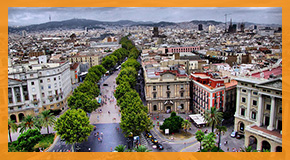
1.) Las Ramblas:
If you’re courageous, after you’ve reached Plaça de Catalunya, you can extend your walk on the famous Rambla till you arrive to the marina! Why not take a walking tour of Las Ramblas?
2.) Go shopping at El Corte Inglés:
On Plaça de Catalunya, don’t miss the most famous Spanish mall. Prices are not especially low; however you will find everything here, every national and international brand. If you’re looking for something cheaper, just cross Plaça Catalunya and in Pelai Street will be your place for shopping.
Why it’s worth visiting
- It is a UNESCO World heritage site.
- It shows that Gaudí could do more than imitate nature: he could use it (it is constructed entirely in natural stones, “pedrera” means “stone quarry”) to build majestic and impressive buildings, still of great delicacy and modern style at the same time.
- It is located in a popular area of Barcelona, where you can access many other landmarks, such as Casa Batlló or Plaça de Catalunya.
- It has one of the most famous terraces in Barcelona because it appears in the Woody Allen’s movie Vicky, Cristina, Barcelona.

